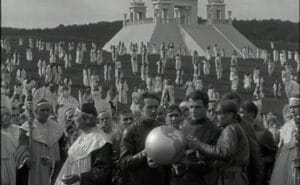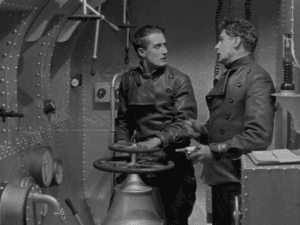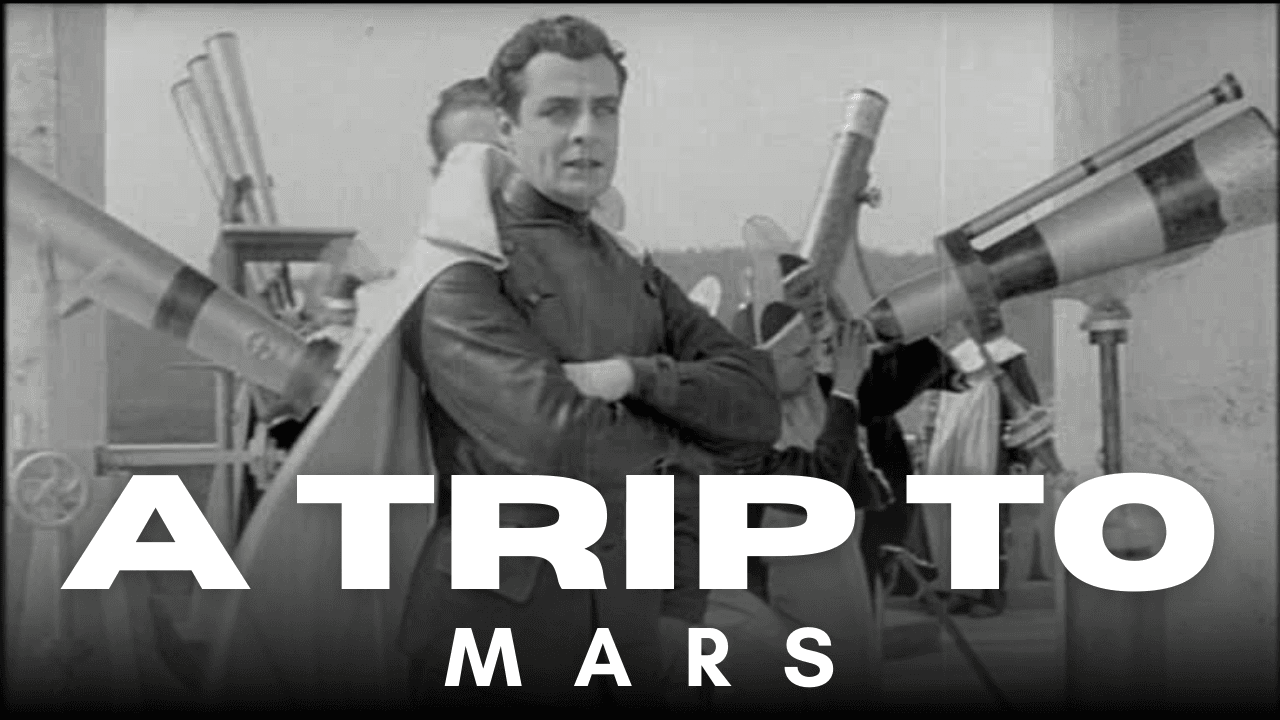Blast Off to the Past! A Hilarious Journey to the Red Planet: Unearthing “A Trip to Mars” (1918)
Introduction: A Cinematic Time Capsule

Before the space age and interplanetary explorations, before CGI and high-tech visual effects, cinema had already dreamed of reaching the stars. One of the earliest sci-fi gems that dared to imagine life beyond Earth is A Trip to Mars (1918), a silent film that combined early cinematic ingenuity with a touch of comedy and satire. This remarkable work offers a fascinating glimpse into the aspirations and anxieties of the early 20th century, serving as both an artifact of its time and an entertaining spectacle.
For those who enjoy classic films, silent-era storytelling, and the roots of the sci-fi genre, this film is a must-watch. In this in-depth review, we will dissect its story, themes, special effects, and legacy, highlighting why A Trip to Mars remains a significant piece of cinematic history.
The Cast and Characters
- Robert Steadman (portrayed by Carl Axel Söderström) – The film’s protagonist, a disillusioned office worker yearning for adventure beyond the mundane routines of daily life. His character embodies the universal desire for escapism and the pursuit of the unknown.
- Martian Leader (portrayed by Gunnar Tolnæs) – The enigmatic ruler of Mars, who provides a satirical reflection of Earthly leaders. His interactions with Robert serve as both comedic and thought-provoking moments in the film.
- Supporting Cast: Includes a variety of actors who play Martian citizens, Earthly office workers, and additional figures that enhance the narrative’s comedic and social critique.
The Plot: An Office Worker’s Wildest Dream

At the heart of A Trip to Mars is Robert Steadman, a disgruntled office worker who grows weary of the mundane daily grind. His yearning for adventure sets the foundation for a narrative that is both whimsical and thought-provoking. Through a series of fantastical events, Robert is transported to the Red Planet, where he encounters a bizarre and amusing Martian society.
While the film keeps its storytelling relatively simple, it cleverly reflects social structures and work-life monotony. The Martian civilization, as depicted in the film, serves as a comedic mirror to human society, poking fun at the rigid norms of the time.
Special Effects: A Testament to Ingenuity
When watching A Trip to Mars, modern audiences might find the special effects quaint compared to today’s standards. However, it is essential to appreciate the ingenuity of early filmmakers who lacked access to digital enhancements. The film features elaborate sets, imaginative costumes, and primitive but effective visual tricks that transport the viewer to another world.
At a time when cinema was still in its infancy, filmmakers relied on creative camera techniques, painted backdrops, and practical illusions to bring their stories to life. A Trip to Mars is no exception, and its efforts in world-building contribute to its charm and historical significance.
The Humor: Timeless Comedy in a Sci-Fi Setting
One of the film’s most enjoyable aspects is its humor. Unlike the serious and often dystopian sci-fi films that would come later, A Trip to Mars approaches the genre with lightheartedness. The physical comedy, slapstick humor, and exaggerated expressions of silent film acting make for an entertaining experience.
Even a century later, the comedic timing remains effective. The interactions between Robert and the Martians, the absurdity of the societal structures he encounters, and the fish-out-of-water moments make this an enjoyable watch for audiences of all ages.
A Subtle Social Commentary
Beyond its comedic elements, A Trip to Mars offers a subtle yet meaningful critique of human society. The film touches on themes such as workplace dissatisfaction, societal rigidity, and the universal desire for adventure and change.
Science fiction has often been a vehicle for social commentary, and even in its early stages, the genre was already exploring these ideas. The film invites viewers to reflect on their own lives, the structure of society, and what it means to truly break free from routine.
The Restoration: A Rediscovered Gem
For decades, A Trip to Mars was nearly forgotten, lost in the archives of early cinema history. However, recent restoration efforts have brought this classic back into the spotlight, allowing modern audiences to experience it in its original glory. Restoring silent films is a labor of love, and this version presents a clearer, more vivid look at a pioneering work of science fiction.
For film historians and enthusiasts, the opportunity to witness such a restoration is invaluable. It provides insight into early 20th-century filmmaking techniques, cultural mindsets, and the origins of a genre that would later produce some of the greatest cinematic masterpieces.
The Legacy of A Trip to Mars
While many silent-era films have faded into obscurity, A Trip to Mars stands out as a significant precursor to the sci-fi genre. It predates the more famous Metropolis (1927) and A Trip to the Moon (1902), serving as a bridge between early fantasy films and the more structured sci-fi narratives of later decades.
The film’s influence can be seen in subsequent space adventure stories, including those of the golden age of Hollywood sci-fi. It paved the way for imaginative storytelling, proving that cinema could transport audiences beyond their everyday lives and into the realms of the unknown.
Why You Should Watch A Trip to Mars
If you’re a lover of classic cinema, a sci-fi enthusiast, or simply someone who enjoys a well-crafted comedy, A Trip to Mars is worth your time. Here’s why:
- A Piece of Film History: Experience one of the earliest sci-fi films ever made.
- Charming Visuals: Appreciate the creativity and resourcefulness of early filmmakers.
- Timeless Humor: Enjoy comedy that still resonates with audiences today.
- Social Reflection: Gain insight into how past generations viewed society and human ambition.
- A Restored Classic: Witness a rare film that has been meticulously brought back to life.
Conclusion: A Journey Worth Taking

In the vast universe of cinema, A Trip to Mars (1918) is a small but significant star. It represents the boundless imagination of early filmmakers and serves as a reminder of how storytelling evolves over time. Whether you’re a dedicated film historian or a casual viewer looking for a unique cinematic experience, this film offers an entertaining and thought-provoking journey.
So, grab your popcorn, dim the lights, and prepare for an adventure to the Red Planet like no other. And remember—sometimes, the best trips are the ones that take us back in time.
For more classic film reviews and deep dives into cinema history, don’t forget to like, comment, and subscribe! Let us know your thoughts on A Trip to Mars in the comments below. What are your favorite classic sci-fi films? Let’s keep the conversation going!



